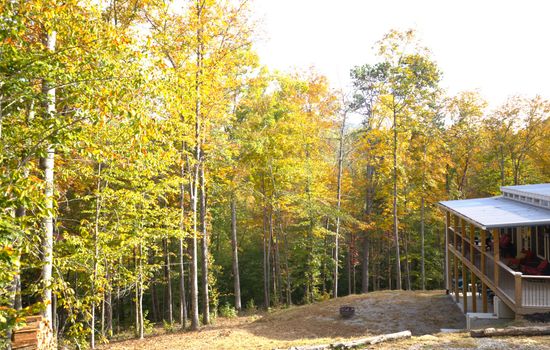The visitor centers at Great Smoky Mountains National Park are open daily, except Christmas Day. From March to November, they are open from 9:00 a.m. to 5:00 p.m., and from December to February, they are open from 9:00 a.m. to 4:30 p.m.
There is no entrance fee at Great Smoky Mountains National Park. However, parking fees apply: $5 daily, $15 weekly, or $40 annually.
Drive via US-441 through the park between Cherokee, NC, and Gatlinburg, TN. From Knoxville, take I-40 to US-321. From Asheville, use US-74. Nearest airports: McGhee Tyson (TYS) in Knoxville and Asheville Regional (AVL). No direct public transport, but shuttles/taxis available from surrounding towns.
Parking tags required for all vehicles over 15 minutes: $5 daily, $15 weekly, $40 annual. No size restrictions for cars, RVs, or motorcycles. Overnight parking permitted at campsites. Fees apply except for handicap plates or short stops.
Accessibility & permits
Emergency
- Cell service availability:Partial
Information not accurate?
Help us improve by making a suggestion.
Welcome to the ultimate guide to Great Smoky Mountains National Park! Spanning over 500,000 acres on the border of Tennessee and North Carolina, this lush, misty expanse offers more than 800 miles of hiking trails, abundant wildlife, rich Appalachian culture, and breathtaking natural beauty. Popular with hikers, photographers, and families, the park’s vast landscapes include waterfalls, old-growth forests, and historic homesteads. It’s the most visited national park in the U.S., yet still offers peace and solitude in its backcountry. Whether you’re hiking a stretch of the Appalachian Trail, enjoying scenic drives, or spotting synchronous fireflies in the spring, the Smokies are an unforgettable experience for all.
- Area (mi²)
- 800
- Annual visitors
- 13 000 000
- Established year
- 1934
Top 3 Facts about Great Smoky Mountains National Park
The Fontana Dam, located at the southwestern boundary, stands as the tallest dam in the eastern U.S., measuring 480 feet in height, and impounds Fontana Lake covering over 10,000 acres.
It’s the most visited national park in the United States, with millions of guests each year.
It’s one of the few places on Earth where you can witness synchronous fireflies flashing in unison each spring.
Family programs
- Junior Ranger
- Ranger-led Tours
- Workshops & Hands-on Activities
- Living History & Cultural Demos
- Family Camping & Overnight
- Arts & Crafts
- Water-based Adventures
Travel Tips
Plan Ahead
Check the park website or visitor centers for road closures, alerts, weather changes, and event updates.
Pack Appropriately
Bring layered clothing, hiking boots, water, food, a park map, and weather protection (sun/rain). Expect variable conditions, especially in higher elevations.
Respect Wildlife
Keep food in bear-proof containers, maintain distance from wildlife, and never feed animals. Black bears are active—follow safety guidelines at all times.
Stay Informed
Stick to designated trails, avoid cliff edges and waterfalls, and supervise children. Always carry a physical map or use a GPS, as cell service can be spotty.
Seasons
Spring brings blooming wildflowers, vibrant greenery, and rushing waterfalls. April and May are ideal for hiking, birdwatching, and seeing wildlife babies. Mild weather and fewer crowds make this a peaceful and photogenic time to visit.
Summer is lively with festivals, ranger-led events, and family-friendly hikes. Long days and warm nights are perfect for camping, fishing, and scenic drives. Expect crowds and heat—early mornings and evenings are best for popular spots.
Fall foliage is a spectacle here—mid-Sept to early Nov brings golden, orange, and crimson hues. Crisp air, thinner crowds, and scenic overlooks make fall hikes unforgettable. Peak leaf season varies by elevation, offering color through different parts of the park.
Winter is serene and uncrowded. Snow at higher elevations transforms the park into a quiet retreat. Best for solitude, scenic drives, and snowshoeing. Roads may close in bad weather, but lower areas remain accessible for hiking and wildlife spotting.
Information not accurate?
Help us improve by making a suggestion.
Where to stay
Frequently Asked Questions
Ready to dive into what Great Smoky Mountains National Park has to offer? Let’s tackle some of the burning questions you might have as you plan your visit!
-
For a vibrant and convenient stay, consider Gatlinburg, Tennessee, which is just 7.6 miles from the park and offers a walkable downtown area with many attractions. Alternatively, Pigeon Forge and Sevierville are also popular options in the same region. If you prefer a quieter experience, Townsend, Tennessee, or Waynesville, North Carolina, could be ideal.
-
The Sugarlands Valley Nature Trail is a great option for kids, as it is a short, fully paved 0.5-mile round trip trail that is easy for little legs. The Gatlinburg Trail, a 1.9-mile each-way hike, is also kid-friendly and allows dogs and bicycles, offering views of the river and old home sites. The Laurel Falls trail, a 1.3-mile each-way hike, leads to a beautiful 80-foot waterfall and is one of the most popular family hikes.
-
You can take your dog on only two hiking trails: the Gatlinburg Trail and the Oconaluftee River Trail. Otherwise, dogs are not allowed on hiking trails but can be in campgrounds, picnic areas, and along roads, as long as they are on a leash six feet or less in length.
-
Yes, there are parking fees. You need to pay $5 for a daily tag, $15 for a weekly tag, or $40 for an annual tag, regardless of the vehicle type or size. Parking is free for up to 15 minutes.
-
To make the most of 24 hours, visit Clingmans Dome for panoramic views, hike to Laurel Falls, and drive the Roaring Fork Motor Nature Trail to see waterfalls and historical sites. Explore Cades Cove to see historic buildings and wildlife, and stop by Mingus Mill for a glimpse into the past. If time allows, take a short hike to Grotto Falls or visit the Mountain Farm Museum.












